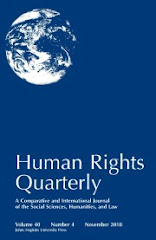The World Trade Organization (WTO) is held out as an exemplar of an effectively functioning international “court.” Yet, a puzzle remains unexplained: in WTO litigation, a respondent found to have enacted an illegal trade policy measure needs only to remedy the illegality. So long as it does, the WTO lacks the authority to order retrospective remedies to be paid to the complainant for past harm. The remedies loophole provides countries with a “free pass” for temporary breach. Why do more countries not take advantage of this pass more frequently? How is it that the WTO manages to function effectively in spite of its imperfect remedies?
This Article suggests that the key to understanding the answer to this puzzle lies in the importance of power asymmetries in a WTO system that is dynamic and evolving. It identifies a series of policy instruments available to a powerful country whenever its trading partner is tempted to undertake a temporary breach that harms the powerful state’s interests. These instruments create additional costs that offset the benefit of any temporary breach, thereby effectively deterring most, albeit not all, temporary breaches. In addition, the established powers share a collective interest in maintaining the WTO system’s stability. This also causes them to exercise collective self-restraint in their own exercise of temporary breaches.
The answer to this puzzle is of more than just academic importance. It also sheds important light on the future of the international trade regime. As geopolitical power shifts and trade among developing countries increases, particular countries may find it more tempting to engage in temporary breaches under certain circumstances. This Article examines the nature of these emergent conflicts and discusses its implications for the future of the global trading regime.
Thursday, May 28, 2015
Wu: Rethinking the Temporary Breach Puzzle: A Window on the Future of International Trade Conflicts
Mark Wu (Harvard Univ. - Law) has posted Rethinking the Temporary Breach Puzzle: A Window on the Future of International Trade Conflicts (Yale Journal of International Law, forthcoming). Here's the abstract:





